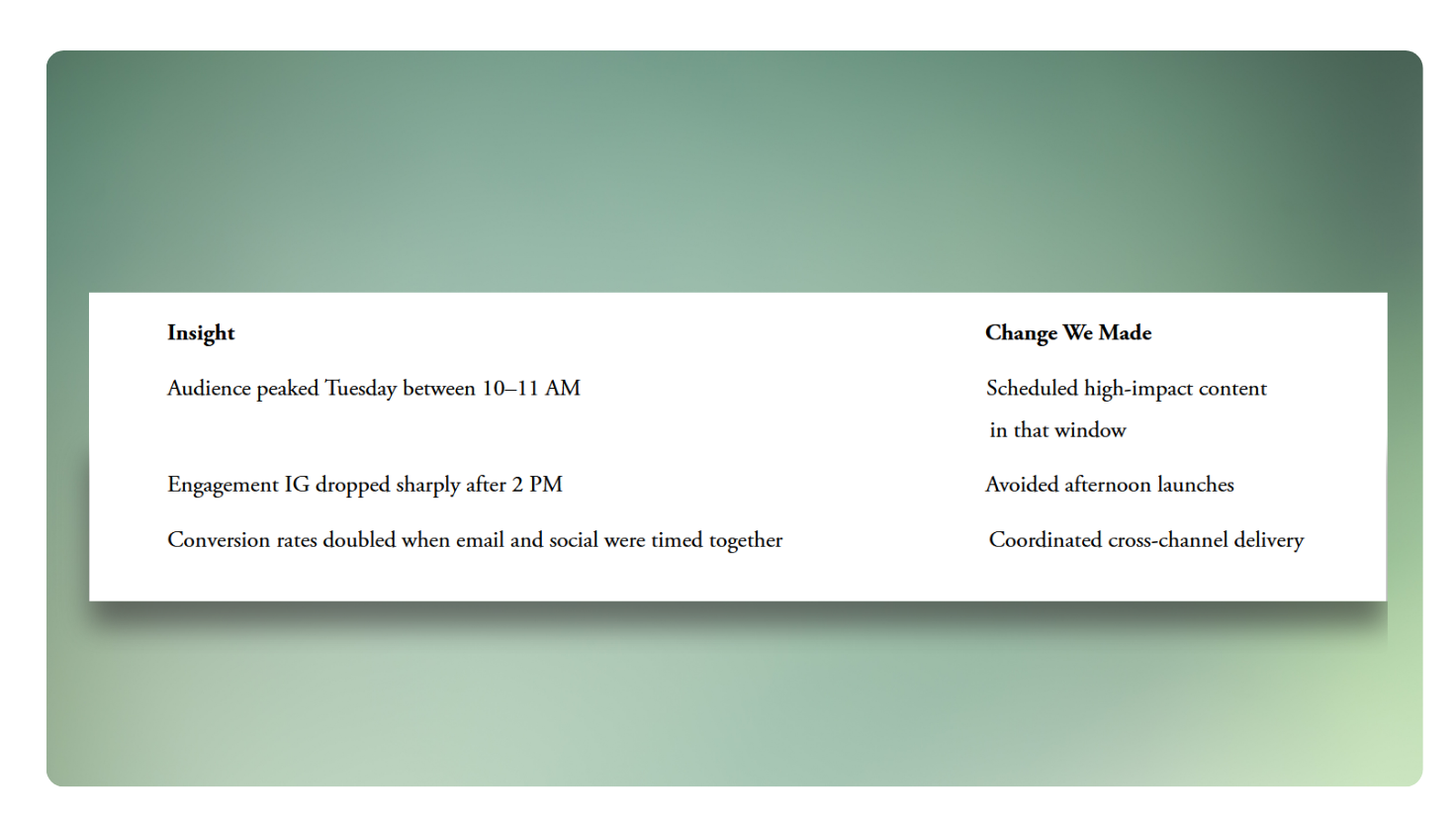Why is My Engagement Low But Reach is High?
You’re putting in the work. Your posts reach hundreds, maybe thousands of people, but the clicks just aren’t matching up.
This is one of the most common frustrations in the digital world.
We’re taught to obsess over messaging, visuals, keywords, and targeting. But even your strongest work will fail if it reaches your audience when they’re distracted, offline, or simply not in the headspace to act.
That’s why we began running regular Timing Audits, they're proving to be well worth the effort!
Why Timing Matters More Than You Think?
Most marketing teams have a general sense of what “good timing” looks like: maybe mornings perform better, or weekends are slower. But that kind of intuition is rarely reliable and often wrong.
What you really need to know is:
When your audience is online
When they engage the longest
When they’re most likely to take action
Once we started focusing on the “when“ in our data, we stopped guessing and started timing things strategically.
The result wasn’t just more traffic. It was engagement and better results with no extra content or spend.
Pros and Cons of Prioritizing Timing
Why it Works
Reduces content fatigue, you publish less, but more effectively
Increases visibility during your audience’s natural attention windows
Aligns with user energy and intent not just availability
Improves conversions with better timing of CTAs
Where it Can Go Wrong
Timing alone won’t fix weak content or unclear offers
It’s easy to overanalyze or chase outliers instead of patterns
Overcomplicating the process can stall progress
Tracking too many variables can obscure what matters
False peaks: A spike at 9 AM one week doesn’t mean 9 AM is always golden. Patterns matter more than outliers.
So yes, timing matters more than most people think, but it has to be part of a system, not a superstition.
Build a Simple System (Without Overwhelming Yourself)
Here’s how to turn timing from a theory into a working part of your strategy.
1. Start Small. Pick a Few Key Metrics
You don’t need to audit everything. Start with what matters most to your business:
Post engagement by hour
Email open/click times
Session duration by time of day
Conversions per campaign window
Choose 2–3 key platforms where you already have access to data ,Instagram Insights, your email platform, GA4, etc.
Set simple, realistic reminders not hourly alarms.
A light weekly review is often enough. For more meaningful trends, plan deeper check-ins monthly and quarterly.
2. Integrate Timing into Your Content Calendar
Timing should live inside your publishing plan not beside it. That means:
Aligning post times with peak audience engagement hours
Avoiding low-return time slots for high-effort content
Planning content in blocks tied to timing patterns, not just dates
A content calendar that includes timing windows becomes more than a schedule,it becomes a performance tool.
3. Monthly Reviews, Quarterly Deep Dives
Monthly: Review what worked, what didn’t, and whether your top time slots are holding steady.
Quarterly: Look deeper, identify shifts in user behavior, seasonal changes, or new opportunities.
You’re not reinventing the wheel every time, just fine-tuning the rhythm, refining if you want.
4. Create a Repeatable Audit Process
Build your own internal timing playbook by tracking:
Which time blocks deliver the strongest engagement
What content performs best at those times
How different channels align or differ
Over time, you’ll replace guesswork with proven publishing patterns, making content decisions simpler, faster, and smarter.
Want Help Getting Started?
You know where to find me,
Till then,
Gabriel Albadin

